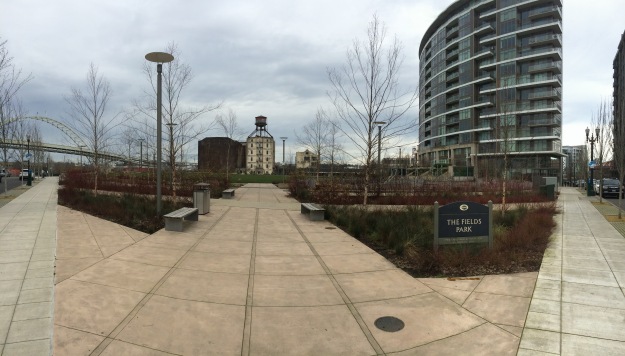
The Park enterance, framed by the four bio-swales (I can’t bring myself to call them ‘water gardens’ as they look very ‘un-garden like’) that take runoff from the adjacent hard surface as well as from the drain system installed across the lawn. They are planted with Betula nigra cultivars along with Cornus stolonifera ‘Isanti’, C. s. ‘Kelseyii and an Iris. As you walk through the Park you will move over eight different hard surface treatments!
The Fields (Click here to see the final design plan), completed in spring of 2013, is Portland’s newest Park in the north end of the Pearl District. While I was still with Parks I did the horticultural review during the design process and was an on site inspector, periodically, during construction. New Parks like this one require a huge time commitment by Parks. Selection of designers, outreach to all of the stakeholders and many other meetings involving more technical aspects of such a project all in an effort to deliver to residents a Park that is beautiful, serves the needs of residents and is affordable in terms of long term maintenance. Before the project is offered to the design community functional goals are set for the Park and a general design theme is chosen. Various firms offer proposals. Concepts are bandied about. Eventually, one is chosen. In this case, the Office of Cheryl Barton, a San Francisco firm, was awarded the design contract (To see what they have to say about it). Continue reading


